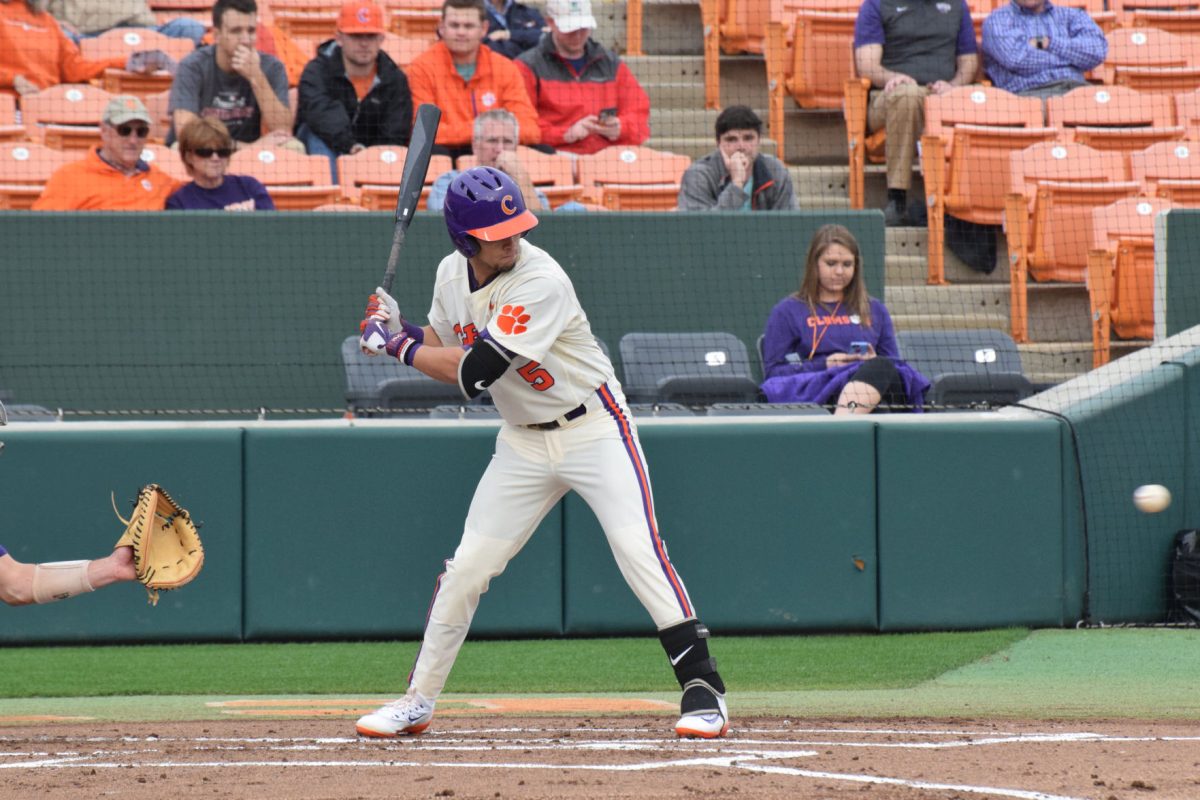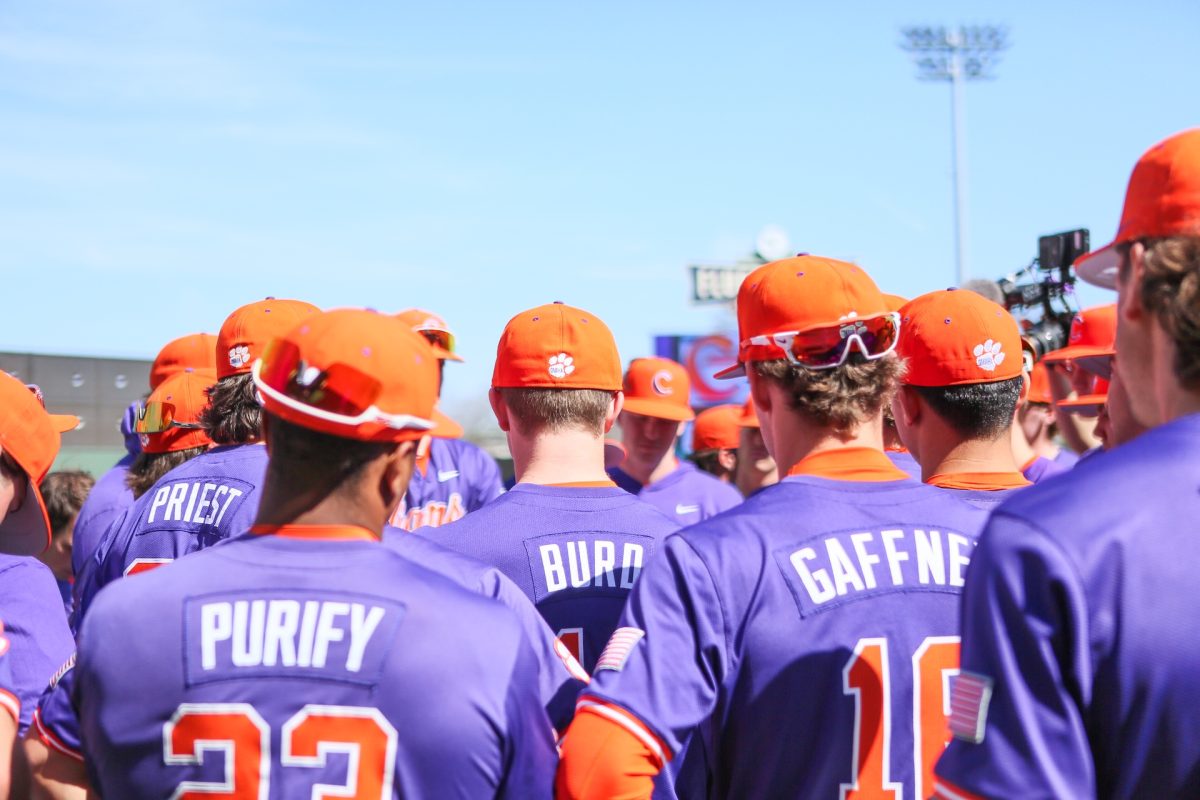Chase Pinder has spent most of the young 2017 season batting fourth. This is not his optimal position in the lineup, as proved by some advanced analytics and a splash of common sense.
Pinder served as a fantastic leadoff man last season. His basic statistics measured out quite well, but his advanced stats prove that he is best suited to be in the top spot. After some extensive stats calculating, Pinder’s true offensive contributions have been quantified.
Starting off simple, his batting average finished at .305 and his on-base percentage was .422. Both are good marks and not inflated by intentional walks (looking at you Seth Beer). While his high slugging percentage is somewhat surprising at .471, but not necessarily a reason he shouldn’t be hitting first.
It is possible Coach Lee saw that he was hitting enough doubles and home runs to warrant a spot further down in the order, but he isn’t ripping the cover the ball either and doesn’t need to slide down any further.
Looking at some advanced statistics, the one that pops out the most is wOBA (weighted on-base average). This is not a stat that pops up often, but it is one of the best stats for examining the overall offensive production of a player. Pinder lands at a robust .397 which is an incredible number.
That number falls just short of NCAA All-American caliber which hovers around .400.
OPS (on-base plus slugging) is another stat, one which combines the on-base percentage with the slugging percentage to provide an essential super-score.
Pinder finishes at .893 for the 2016 season, but that really underrates him as a hitter. OPS assumes that slugging and on-base are equal, which they are not. Hence the need for wOBA. Pinder’s wOBA number is a sign that he might be the best pure hitter on the team, or at least in competition with Seth Beer.
That sounds like Coach Lee would want him batting behind Beer, but when someone bats leadoff, they get the most amount of at-bats over the length of a season. Therefore, you would want to have your best hitter come up as much as possible. It makes too much sense to have Pinder at the top providing the spark and giving RBI opportunities to those below him.
Other important statistics needed to make an informed decision is the ISO number, as well as his strikeout and walk percentages. ISO is short for isolated power and measures how much power the hitter has. Pinder has about average power which isn’t very helpful for someone in the middle of the order, but is much more conducive to a hitter at the top of the order.
Power is often wasted if used without men on base, which Pinder would see more of as a leadoff hitter.
Strikeout and walk percentages are the nail in the coffin for this case. Pinder in the 2016 regular season had a K percent of 12.92 percent and a BB percent of 13.65 percent. Both of those numbers, when looked at simultaneously, reveal a player that walks a lot and strikes out very little. Oftentimes, contact hitters strikeout very little, but also walk very little because of their natural tendency to swing at as many strikes as possible. Conversely, power hitters get walked often because pitchers don’t to give up more than one base to them.
What Pinder does is he combines the impressive judgment of a contact hitter and the high walk tendencies of a power hitter to become an on-base machine. Pinder is the penultimate leadoff man because he gets on base early and often.
Monte Lee loves playing around with his lineups and is not afraid to move players around to try and find a solution that works. Perhaps his hardest test so far this year has been trying to find someone to fill the leadoff spot for the Tigers.
Last season, Chase Pinder batted leadoff in every game and was very successful there. He had an excellent on base percentage of .412 and a total of 43 walks on the season. He was able to set the table for the power hitters behind him in Seth Beer, Chris Okey and then Chris Williams later in the year.
However, this season things are different. Okey is gone and can no longer bat behind Beer to protect him. Last year, if a team walked Beer, they then had to pitch to Okey who could do just as much damage as he could.
Williams seemed to be the ideal choice to fill that hole in the lineup, but an injured hand that kept him out the first several games has stopped him from making as large of an impact in the lineup as originally expected.
The seemingly unlikely candidate to bat behind Beer in the cleanup spot is Pinder. While he is not a power hitter, he is a reliable one.
Even in that leadoff spot last year, he has 46 RBIs, third on the team behind Beer and Okey respectively. He also had a .471 slugging percentage and did have 11 homeruns, the third Tiger to break double digits in that category last season.
So far this year, Lee has had Pinder behind Beer in the order, and he has excelled there. Currently, he leads the team with a .380 batting average and is tied with Beer with the most RBIs at 13. Yes, that’s right, Pinder currently has as many RBIs as homerun machine Seth Beer. For comparison, the next highest on the team is Andrew Cox with nine.
Teams have, of course, still walked Beer to avoid pitching to him, but Pinder has made them pay for it more than once by delivering a hit.
Of course, none of this matters if the Tigers in front of Beer and Pinder can’t find ways to get on base. K.J. Bryant spent a couple of games in the leadoff role but was not able to give the type of production there that is necessary. Lee then turned to freshman shortstop Logan Davidson. Statistically, this wasn’t a bad move. Davidson had a .324 batting average and an on base percentage of .390.
However, Davidson struggled in that leadoff spot and his average dropped to .250. Lee pulled him from that spot in the second game of the Notre Dame series to put Pinder back in. Davidson was only given four games to adjust to his new role, moving from the low part of the order to the very top. Given more time, he could become exactly what the Tigers need up there. In his time in leadoff, he wasn’t able to generate many hits, but he was able to work more than one crucial walk that led to Clemson scores.
Davidson also has the most stolen bases for Clemson, with five on six attempts. Speed and the ability to steal bases is another quality that is essential to a leadoff batter, giving even more reason to give Davidson a little longer to prove himself in that spot. Against rival South Carolina in a decisive game three of the series, Davidson was leading off the top of the 11th inning for the Tigers. He worked a walk, stole second, moved to third on a sac bunt from Reed Rohlman and scored on a wild pitch. That run proved to be the winning run of the game and might not have happened without his speed on the base paths.
While Davidson may not be the answer to the question of leading off, Pinder needs to stay lower in the lineup to protect Beer and give Clemson a chance to generate more RBI opportunities.








